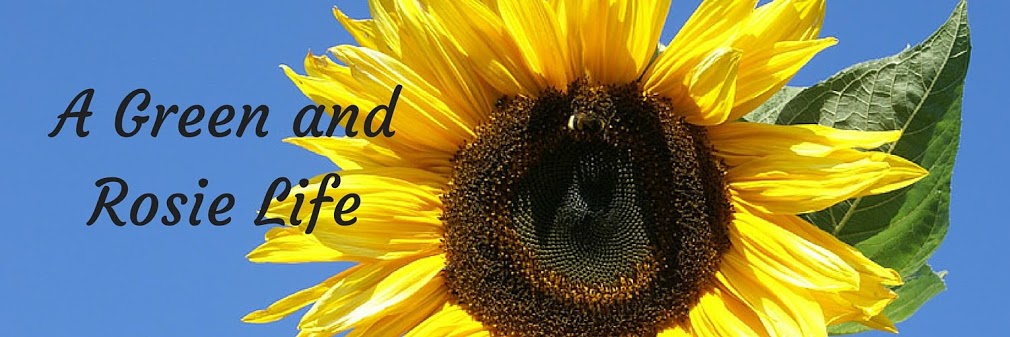Week 28 to 30 - Cooking Efficiently
Apologies for the lack of Weekly Green Tips over the last 2 weeks but I have been away on holiday. So to catch up here is a triple bonus post with 21 ways you can cook more efficiently and thus reduce how much energy (gas/electricity) you use when preparing meals. I hope you enjoy them as much as the food you prepare.
 |
| Image from Pixabay |
On your cooker hob:
1. Small is good
To boil or simmer something use the smallest ring possible to maintain the temperature you need. I often move my pans from a larger ring to a smaller one once they are boiling
2. Choose your pans with care
Pick the right size and also consider what they are made from. Cast iron pans heat up quickly and of you are using a ceramic hob make sure the pan base is flat for best heat absorption.
3. Boil what you need
When boiling water in a pan, only use the amount you actually need. Vegetable like cabbage and spinach need very little water and cook quicker than when they are swimming in a pan of water.
4. Keep that lid on
Some recipes say you should cook something without the lid on but otherwise keep the id on to retain heat and if the pan is boiling over turn it down or move t to a smaller ring.
5. One pot meals
One pot stews etc. mean you use much less energy than meals with loads of pots -and there is less washing up to do afterwards!

Image from Pixabay

In the oven
6. Oven pre-heating
Dishes like roasts that are in the oven a long time do not need the oven to be preheated - just put them in and turn the oven on. However pastry, cakes and bread do need to be at their cooking temperature before you put them in .... but if you work out how long your oven takes to heat up you can add them just as it gets to temperature rather than having a hot oven waiting for you to add something to it.
7. Switch the oven off early
Ovens are sufficiently well insulated to retain heat so you can turn it off 10mins before the dish is ready and it will not cool down.
8. Keep the oven door shut
Resist the temptation to open the door when something is cooking. Look through the glass door if possible.
9. Batch cooking
Try and get into the habit of adding as many things as possible to the oven. Bake extra cakes and dinners and freeze them for later.
10. Use glass or ceramic dishes
These are the most efficient material and will enable you to cook at slightly lower temperatures
11. Put metal skewers into baking potatoes/roast joints etc
This will help move the heat into the centre for faster cooking.
Energy Efficient utensils
12. Pressure cooker
For meals that take a long time to cook but for when you are short of time a pressure cooker is your friend and you'll be using much less energy for that recipe.
13. Slow cooker
You can cook stews, baked potatoes and even cakes in a slow cooker with minimal energy usage. Just pop it on in the morning and come home to a hot meal.
14. A wok
A wok is a super-fast way to cook and is also great for retaining nutrients in your meal too.
15. A steamer
If you are cooking lots of vegetables a steamer is your friend and you can cook them all on one ring.
16. A Haybox or Wonderbag
This is something a bit different. A hay box is what it says - a box full of hay. You get your stew up to boiling point and then bury it in the hay which retains sufficient heat to fully cook the meal over a long period of time. A wonderbag is a modern alternative where you don't need hay - slow cooking without electricity.
 |
| Wonderbag - a non-electric portable slow cooker |
Your Kettle
17. Boil what you need in the kettle
If you only want one cup of tea/coffee or a small amount of boiling water for a recipe then only boil that much water, not a whole kettle-full ... but if you do forget use the remaining hot water for washing up.
18. Keep lime scale at bay
If you live in a hard water area your kettle will build up lime scale deposits that will greatly reduce its efficiency. It is easy to brush out if you do so on a regular basis.
Generally
19. Choose quick recipes
Meals that cook quickly will use much less energy so search for recipes that don't take ages on the top or in the oven. And if you cut your food into smaller pieces they will cook quicker.
20. Raw Food and Salads
Now whilst going totally raw is probably a step too far for most people eating some raw foods and more salads with uncooked ingredients will reduce how much energy you use to cook
21. Defrost frozen food overnight
By defrosting a frozen meal overnight in the fridge you generally reduce the time needed to cook it by half. You will also save energy keeping your fridge cool as it defrosts.
Do you have any more ways to cook more efficiently? I am sure there are plenty and I'll do another post if I get enough ideas.





This is my kind of blog post. And my kind of attitude. Don't you find that this is a trick the French have down to a T? Thank you! Visiting from #PoCoLo
ReplyDeleteSome great tips Rosie, and lots are common sense but that seems to have gone out the window for lots. MOH was boiling water in a saucepan the other day and moaning that our cooking took forever, not having the lid on was clearly not a factor... [rolls eyes] thanks for sharing with #PoCoLo
ReplyDeleteThese are fascinating tips! It's crazy how many of these I'm like, yes I know, but don't always put into practice!
ReplyDeleteThat Wonderbag's a great idea. And so many other tips that are obvious yet I don't really do! Thanks for hosting #goinggreenlinky
ReplyDeleteWe are great believers in steaming - potatoes in the bottom pan and two tiers of veg steaming on the top. If you've never tried it you will be amazed at how much more tasty your veg will be (if you don't overdo it!)
ReplyDeleteIf you've got your log burner on (assuming it has a flat top) you can simmer on that, as well as leaving a kettle on there. Free heat!
We steam a lot too and as for our woodburner, it is so much more than just a heat source. We cook on it, heat water for washing up/hot drink and it dried our clothes via an overhead airer. Boots and pets warm in front of it and it provides a focal point for our family. We are currently building a small extension and that will have a woodburner that will also have a back boiler to heat water and run underfloor heating.
Delete